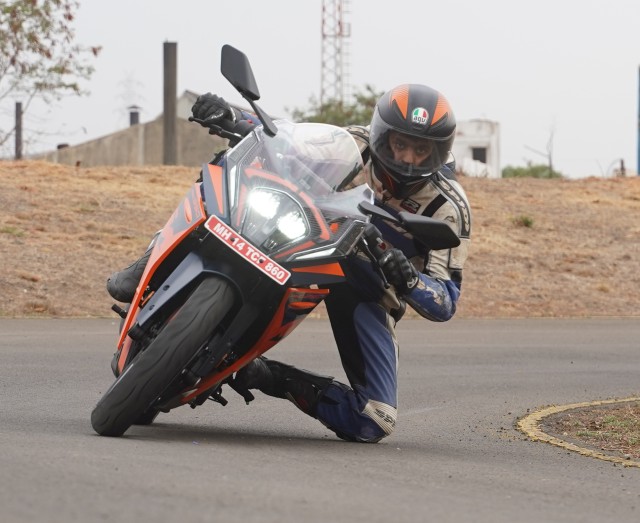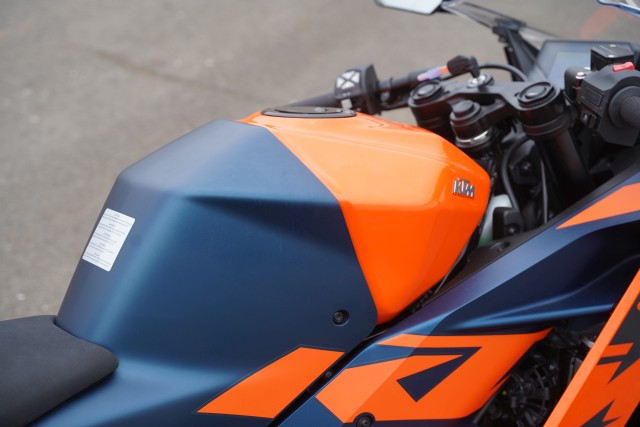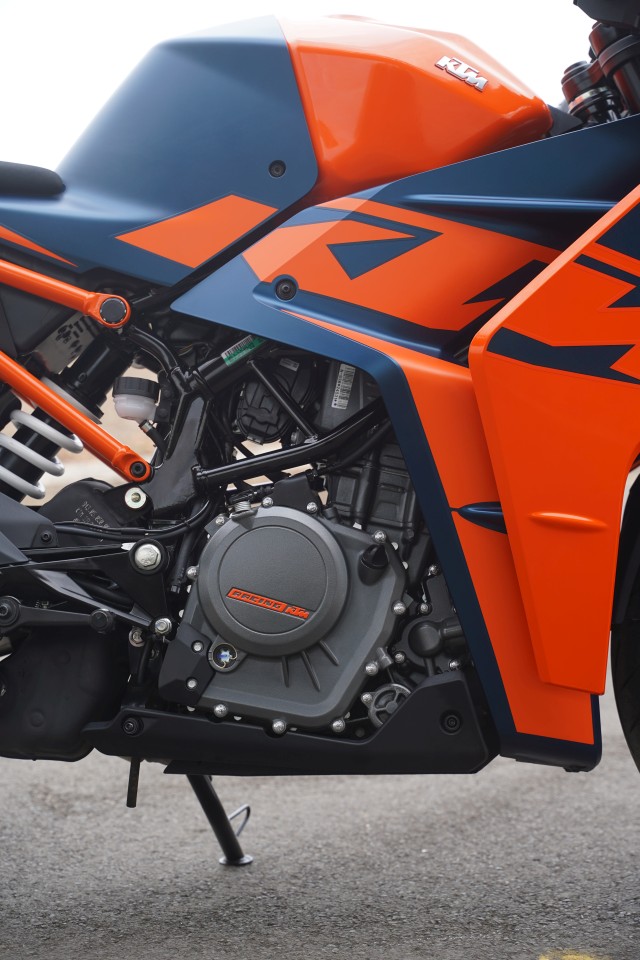We bring you our review of the 2022 KTM RC 390 after spending a morning with the motorcycle at Bajaj’s test track in Chakan, Pune.

The KTM RC 390 was originally introduced in India in 2014 after the success of its naked sibling – the 390 Duke. After receiving some very minor updates over the years, the much-awaited 2022 KTM RC 390 has finally hit our shores. This model is completely refreshed and sports a host of new features.

This new generation RC 390 might not really look that appealing at first glance, but it is something that will probably just grow on you over time. An LED headlight sits inside the new fairing unit that is larger at the front and it also incorporates the indicators at the edges. The fuel tank can now hold 13.7 litres of petrol compared to the 9.5 litre tank on the previous generation model. At the rear, the RC 390 sports a new exhaust unit which is reminiscent of the ones we see on KTM’s Moto3 bikes. The tail section has also been redesigned and added convenience comes in the form of new seat units and grab rails for the pillion. A nice touch from KTM is the addition of adjustable levers, a flexible gearshifter, and rear brake lever, which will eliminate damage to them in case of a fall. Currently, there are two colour options on offer – KTM Factory Racing Blue and KTM Electronic Orange.

This new model places a rider in a slightly less aggressive position than before and the clip-on handlebar unit can be lowered by 14.5 millimetres for a more aggressive riding position on race tracks. While attacking a set of corners, there was a lot room to move around quickly while flicking the motorcycle and thanks to the comfortable seat, it was effortless to spend a lot of time riding on the track.

Powering the 2022 KTM RC 390 is the 373-cc, single-cylinder, liquid-cooled motor that puts out 43.5 hp at 9,000 rpm and a peak torque of 37 Nm at 7,000 rpm. This translates to a 1 Nm bump up in torque when compared to the previous model. The bike also gets a 40 per cent larger airbox, which has resulted in improved torque delivery. As soon as I slotted the bike into gear and got going, I could feel the high level of refinement. The engine is now mapped to provide a linear power delivery throughout the rev range and there is a very slight surge in pickup once it crosses 6,000 rpm mark. It is a fully different motorcycle when compared to the hooligan nature of the BS3-compliant motor, which now makes it safer and accessible for beginners. On the long back straight, I clocked a respectable top speed of 159 km/h in sixth gear.

This generation of the KTM RC 390 sports a trellis frame with a bolt-on subframe and was developed with a focus on saving weight. The bike now has a kerb weight of 172 kg. Contributing to the lighter unsprung mass are newly designed bionic wheels, a hollow front axle, and a disc rotor that is mounted directly on the wheel.

The suspension setup now comprises open cartridge WP APEX upside-down forks at the front and a WP APEX shock at the rear. The India-spec model does not get adjustable front forks like the international-spec RC390, but I felt that the stock setup did really well on the track as it provided me with a lot of confidence to push the bike harder with every passing lap. It has become more nimble in the way it flicks from one side to another while feeling extremely stable and planted. It also allowed me to correct my inputs when I made an error, which, in turn, made me quickly grasp the tricky sections of this track where I was riding for the very first time. Further enhancing the superb handling characteristics and allowing for a lot of knee scraping action was the set of Metzeler Sportec M5 rubber.

Braking duties are handled by a 320-mm disc at the front and a 230-mm disc at the rear. Like all KTM bikes, the brakes are sharp and have great bite. All that was needed to tackle this test track was one finger on the front brake. To make things interesting, KTM have also given it the Supermoto mode, which allows the rear ABS to be switched off.
Some of the main new features on the RC 390 include traction control, a quickshifter, cornering ABS, and the updated TFT dash that we have seen in many of the newer KTM models. The traction control works well and cuts power to the rear wheel if the throttle is jerked open or when the motorcycle detects that the rear is stepping out. The quickshifter performs smoothly when the gears are shifted between 4,000 rpm and 6,000 rpm, but I needed to use a little more force to upshift when the bike was revving close to the redline.

Priced at Rs 3.14 lakh makes it around Rs 36,000 more expensive than before. It surely has become expensive to own one of these, but with all of the additional kit and how much fun it is to ride, it seems worth the extra dough. It is evident that KTM have taken sharpening this track tool very seriously, while adding some bits to increase the comfort and the electronics that have made it a much safer bike for rookies.


Leave a Reply